#queer south
Photo

‘We Are Everywhere’: A Reading List for the Queer South
June first marks the beginning of Pride Month! To celebrate, Spencer George curates a list of seven pieces that range from a celebration of the work of gay photographer Jack Robinson to deeply personal essays about lived experiences in the Southern United States.
In popular culture, the stories I saw of Southern queerness often involved leaving. Queerness in these narratives was a secret shame, one that, if revealed, led to loss and disappointment. If there were happy endings to these stories, it was only because the characters left everything behind, escaping to distant metropolises where they could begin anew. There seemed to be no bridge between lives once lived and futures where the possibility of joy existed. Most of all, there seemed to be no way to have that joy without removing oneself from home entirely.
I often think that I would have come out years earlier if I had been able to see myself represented in different ways. If I had witnessed queer characters fall in love and thrive and build lives — joyous, wonderful, full lives — in the places they are from.
#longreads#longreads reading list#queer#queer south#jack robinson#pride#lgbtqi community#reading#the south
2K notes
·
View notes
Text


Wanted to share some pictures from a middle school GSA meeting four years ago today! 🏳️🌈🤍🌈
I (second picture, far left, grey shirt) was in 7th grade and the founder/president. As far as I know the GSA dissolved when I went to high school, but hopefully my middle school is more accepting now. I started fighting to start a GSA in 6th grade, and a while ago I found old drafts of letters to the administration who argued that parents would be upset about it lol. I know it was only four years ago, but it was a real necessity at the time compared to now. At one point, Brave Trails (queer summer camp on both coasts) sent us all some pronoun pins and stickers for free. Our last big event before covid hit was a Valentine’s Day dance I organized, we rented a little party room down at Woodlawn Lake. I still know or talk to almost everyone in that second picture, and we’re all juniors and seniors in high school now (except my sibling lol they’re younger). Some of the now-seniors I even went to my first pride with in 2019. Queer people are more accepted at schools now, even here in San Antonio, than we were in 2017/18, which I’m grateful for. Anyway, it was real important for us to have this and I’m glad I did it. It gets better 🤍
#trip down memory lane!#bolded so it’s easier to read#lgbtq positivity#lgbtq community#GSA#gay straight alliance#gender sexuality alliance#pride#texas politics#queer south#queer community
27 notes
·
View notes
Text
me when a fellow southerner dunks on the state of the american southeast: o absolutely, hell yea, u have my undivided attention, pls continue
me when literally Anyone Else clowns on stoopid rednecks: i'm fixin to stew my soup beans with yr femur tonight
4 notes
·
View notes
Text
Escaped piggy appeared again this morning, this time with two babies in tow. Apparently her name is Reba. <3 I will now be referring to her as Ms. Reba Oink'entyre.
1 note
·
View note
Text

Grim Park — My Road (korean traditional paint, acrylic on silk, 2022)
12K notes
·
View notes
Text

Today, we take a moment to celebrate a historic milestone - the anniversary of South Africa legalizing same-sex marriage. 🇿🇦🏳️🌈 On this remarkable day, South Africa not only became the first country in Africa to recognize love in all its forms, but also set a precedent for human rights and equality across the globe. This day serves as a reminder of the progress we've made, and the work that still needs to be done. Let's continue to fight for love, acceptance, and equality for all. Today we celebrate love, human rights, and the beautiful rainbow nation of South Africa. 🌈❤️
#lgbt#queer#bisexuality#bi#lgbtq#lgbtqia#bi pride#same sex marriage#same sex love#same sex relationships#love wins#south africa#marriage equality#equality#equal rights#marriage#relationships#global#milestones
5K notes
·
View notes
Text
Book Report for Real Queer America: LGBT Stories from Red States (2019)

ID: a photograph of Samantha Allen, a white woman with shoulder length blonde hair, holding a copy of her own book, Real Queer America. A closer up image of the cover shows the title on a glowing road sign with a highway stretching behind it. / end ID
____
Read in: Dec 2022 (audiobook format)
Readability: This was a quick, easy read — the narration is engaging, and it's not a long book.
Recommendation: I would highly recommend this book to all USAmericans!
Those who live in red states will be buoyed up by the stories Allen tells about the close-knit communities and committed activists that call this large stretch of the USA home. I'm originally from Ohio but have spent the last decade in the South, and I can't count the number of times a passage in this book had me glowing with love and pride for the people who live here.
And those who don't live in red states, who live in New England or the Western coast, will find compelling reasons to stop writing off such a large portion of the USA's queer life. Maybe you'll see that queer folks in the South and midwest have things to teach the queer folks in places like San Francisco and NYC.
Further thoughts:
For me, there was something powerful in each chapter. I found myself re-reading certain passages multiple times.
The chapter on Mormons in Utah challenged me to rethink some biases about queer folks who choose to stay Mormon; the chapter on Tennessee reaffirmed for me how non-romantic, non-sexual relationships can be just as queer in the ways they challenge societal norms; the chapter on Georgia has me motivated to go seek out some more queer community in this state I now call home, and on and on...
#bookblr#book report#real queer america#samantha allen#queer life#queer culture#queer south#december 2022#2022 reads
0 notes
Note
Do you know if pride flags are universal? Just wondering if any other countries use flags that have been created there. I'm guessing not because I think maybe we'd see them on Tumblr, but I also realize that lack of evidence on Tumblr doesn't make that a certainty☺️ anyway, I thought this blog would be a good place to ask. Also, I guess where were all the current standards designed?
Depending on what one thinks of in regard to pride flags (the progress flag, the rainbow flag, the asexual flag, etc.) they are fairly universally used. There is photographic evidence of them being used globally to represent queerness around the world!
That being said, there are customizations galore, both to represent individuality and intersectionality. This can mean similar colours but different configurations, additional elements added to flags, or multiple flags melded.
Flags in general usually start with an individual design from an individual person, such as the rainbow flag by Gilbert Baker. But localizing the rainbow design to represent a more specific intersection of identities is relatively common!
While researching, I found this great resource for localized versions of the rainbow flag and their individual uses and meanings: https://www.crwflags.com/fotw/flags/qq-rb_v.html
Here are some that I enjoyed learning about!
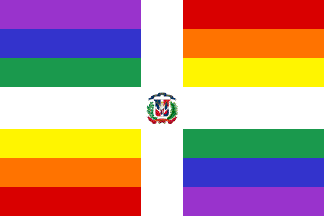
Dominican Republic gay pride

Hong Kong LGBT Flag
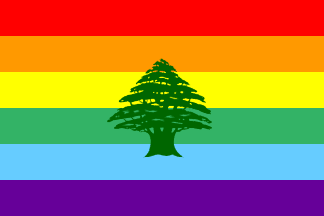
Lebanese gay flag (Lebanon)

LGBT Flag (South Korea)
I want to thank you for asking this because researching it was an enlightening experience for me! I enjoyed learning about it and am excited to share this information!
#queer history#queer#lgbt#lgbt history#gay history#answered#lesbian history#transgender history#transgender#making queer history#south korea#queer south korea#lebanon#queer lebanon#hong kong#queer hong kong#dominican republic#queer dominican republic
4K notes
·
View notes
Text


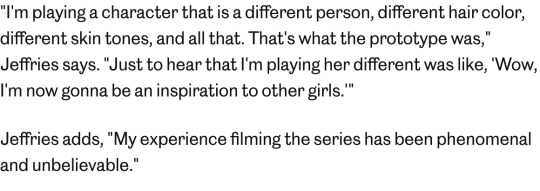

this makes me want to cry
#crunchyposts#pjo#pjotv#guys i also have been obsessed with this series for years it means so much to me that the actors are also fans of the book#it doesnt mention it here but i know leah's said that she was so excited to play annabeth to be 'the girl in her brothers books'#since she got his old copies when he left for college (?)#this means absolutely everything to me rep in media means so much to me bc of how little i understood myself as a kid since i never saw#anyone like me and pjo was the first time i saw someone whse brain was kidna like mine and so many things clicked into place after that#and as a queer girl and someone who's south east asian i rarely saw anyone like me on tv and ive still never seen any demiro char on screen#but now they actually have a non white nd character and its /my/ favorite character and its gonna mean so much to younger black girls#100#150#200#300#400#500#1k#1.5k#2k
2K notes
·
View notes
Text
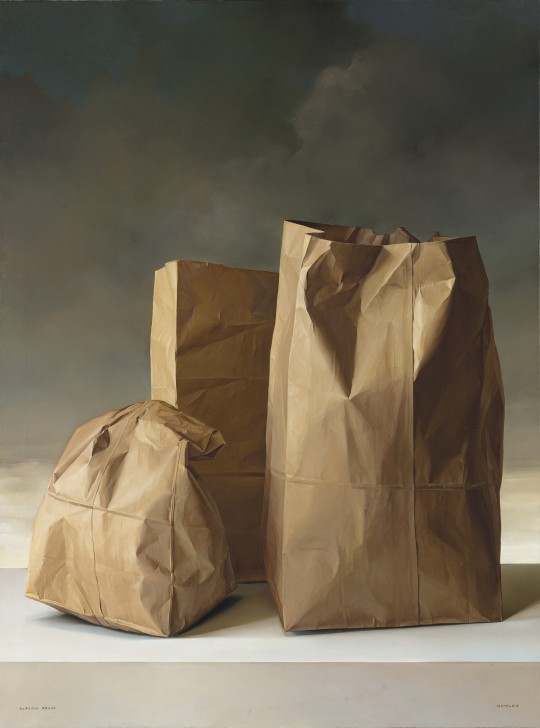
Bolsas de papel (Paper Bags), Claudio Bravo, 1970
Oil on canvas
40 x 29 ¾ in. (101.6 x 75.6 cm)
#art#painting#claudio bravo#hyperrealism#latin american art#1970s#20th century art#20th century#realism#photorealism#oil#chilean#lgbtqia artists#queer artists#south american art#south american artists#artists of color
711 notes
·
View notes
Text
It still needs approval from the Senate and royal endorsement to become law, but experts are saying that by the end of 2024 Thailand will officially become the first South East Asian country to recognize 'same-sex unions.'
400 of the 415 lawmakers present approved this bill, and will give couples equals rights for marital tax savings, inheriting property to giving medical consent for partners during treatments if someone is unconscious/etc.
This is a historic moment and I'm sure many couples will be registering their marriages soon. This is wonderful news 🇹🇭🌈
#feminist#social justice#current events#current news#thailand#same sex marriage#lgbtqia community#lgbtqia#queer liberation#queer community#south east asia#marriage equality
366 notes
·
View notes
Text
posting all my art on tumblr hours before anywhere else For funsies hi
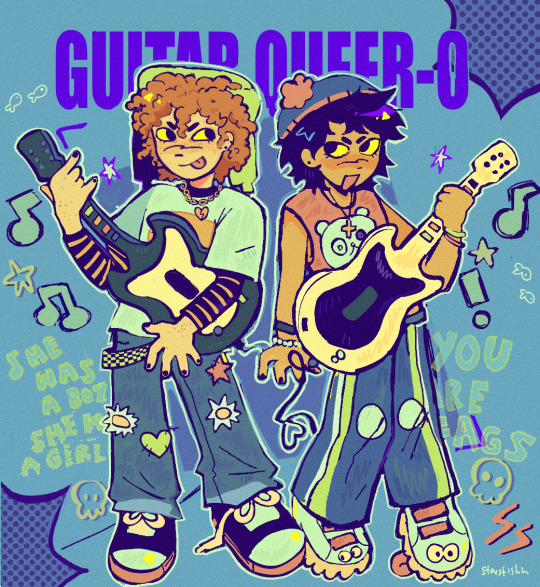
#south park#southpark#south park fanart#fanart#south park style#stan x kyle#kyle broflovski fanart#kyle broflovski#stan marsh fanart#stan marsh#guitar queer-o
2K notes
·
View notes
Text

Grim Park — Shimhodo, Sunlight (korean traditional paint on silk, hanging scroll, 2022)
667 notes
·
View notes
Photo
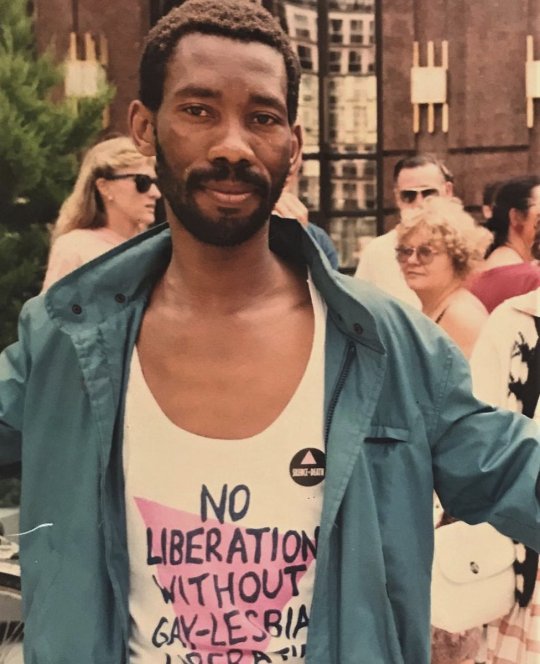
Black History Month: Simon Nkoli
“I am black, and I am gay. I cannot separate the two parts of me into secondary and primary struggle. They will all be one struggle.”
Simon Nkoli was born in the late 1950s in the Black township of Soweto in South Africa. He grew up under apartheid, and first became involved with anti-apartheid activism as a student, despite negative reactions within the movement to his homosexuality.
In 1984, Simon was arrested along with 21 other men while protesting rent increases in the township of Delmas, a group which became known as the Delmas 22. While in prison awaiting trial, Simon was outed, and faced backlash from the rest of the group, many who feared that pulic knowledge of his sexuality would negatively impact the outcome of the trial. To the surprise of his co-accused, Simon received an outpouring of support from the international queer community, which in turn led to greater international support for the Delmas 22 and anti-apartheid work.
Simon was ultimately acquitted, and began work as a founding member of a new group, GLOW - the Gay and Lesbian Organisation of Witwatersrand - fighting for the rights of queer people in Johannesburg’s Black townships. Simon was diagnosed with HIV while in prison, and focussed especially on HIV/AIDS activism in Black communities. With GLOW, Simon went on to organise Johannesburg’s first Pride march in 1990.
In 1994, Nelson Mandela became South Africa’s president, marking the end of apartheid. Simon met and negotiated with government officials to ensure the rights of gay and lesbian people would be enshrined in the country’s new constitution - the first country in the world to do so.
Learn more
Image: Simon wearing a shirt with a pink triangle which reads “No liberation without gay-lesbian liberation”, and a pin reading “Silence=Death”
#simon nkoli#black history#south african history#african history#queer history#aids#gay history#lgbt history#lgbtq#pride#black history month
2K notes
·
View notes
Text
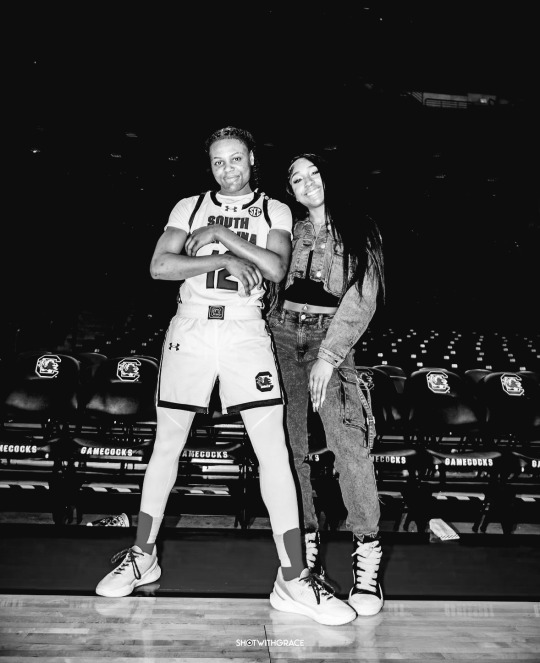
Championship-winning MiLaysia Fulwiley and her track and field star girlfriend Jameesia Ford won the Co-Female Freshman of the Year Award at the South Carolina Gamecocks gala.
#black lgbt#lgbt#black queer notables#black lgbt women#lgbt women#black queer women#queer women of color#queer women#milaysia fulwiley#south carolina gamecocks#wlw post
194 notes
·
View notes
Text
Abu al-Faraj al-Isfahani’s Kitab al-Aghani records the lives of a number of individuals including one named Tuways who lived during the last years of Muhammad and the reigns of the early Muslim dynasties. Tuways was mukhannathun: those who were born as men, but who presented as female. They are described by al-Isfahani as wearing bangles, decorating their hands with henna, and wearing feminine clothing. One mukhannathun, Hit, was even in the household of the Prophet Muhammad.
Tuways earned a reputation as a musician, performing for clients and even for Muslim rulers. When Yahya ibn al-Hakam was appointed as governor, Tuways joined in the celebration wearing ostentatious garb and cosmetics. When asked by the governor if he were Muslim Tuways affirmed his belief, proclaiming the declaration of faith and saying that he observes the fast of Ramadan and the five daily prayers. In other words, al-Isfahani, who recorded the life of a number of mukhannathun like Tuways, saw no contradiction between his gender expression and his Muslimness. From al-Isfahani we read of al-Dalal, ibn Surayj, and al-Gharid—all mukhannathun—who lived rich lives in early Muslim societies. Notably absent from al-Isfahani’s records is any state-sanctioned persecution. Instead, the mukhannathun are an accepted part of society.
...
Far from isolated cases, across Islamic history—from North Africa to South Asia—we see widespread acceptance of gender nonconforming and queer individuals.
- Later in the Ottoman Empire, there were the köçek who were men who wore women’s clothing and performed at festivals. Formally trained in dance and percussion instruments, the köçek were an important part of social functions. A similar practice was found in Egypt. The khawal were male dancers who presented as female, wearing dresses, make up, and henna. Like their Ottoman counterparts, they performed at social events.
- In South Asia, the hijra were and are third-sex individuals. The term is used for intersex people as well as transgender women. Hijra are attested to among the earliest Muslim societies of South Asia where, according to Nalini Iyer, they were often guardians of the household and even held office as advisors.
- In Iraq, the mustarjil are born female, but present as men. In Wilfred Thesiger’s The Marsh Arabs the guide, Amara explains, “A mustarjil is born a woman. She cannot help that; but she has the heart of a man, so she lives like a man.” When asked if the mustarjil are accepted, Amara replies “Certainly. We eat with her and she may sit in the mudhif.” Amara goes on to describe how mustarjil have sex with women.
...
Historian Indira Gesink analyzed 41 medical and juristic sources between the 8th and 18th centuries and discovered that the discourse of a “binary sex” was an anachronistic projection backwards. Gesink points out in one of the earliest lexicography by the 8th century al-Khalil ibn Ahmad that he suggests addressing a male-presenting intersex person as ya khunathu and a female-presenting intersex person as ya khanathi while addressing an effeminate man as ya khunathatu. This suggests a clear recognition of a spectrum of sex and gender expression and a desire to address someone respectfully based on how they presented.
Tolerance of gender ambiguity and non-conformity in Islamic cultures went hand-in-hand with broader acceptance of homoeroticism. Texts like Ali ibn Nasir al-Katib’s Jawami al-Ladhdha, Abu al-Faraj al-Isfahani’s Kitab al-Aghani, and the Tunisian, Ahmad al-Tifashi’s Nuz’ha al-‘Albab attest to the widespread acceptance of same-sex desire as natural. Homoeroticism is a common element in much of Persian and Arabic poetry where youthful males are often the object of desire. From Abu Nuwas to Rumi, from ibn Ammar to Amir Khusraw, some of the Islamic world’s greatest poets were composing verses for their male lovers. Queer love was openly vaunted by poets. One, Ibn Nasr, immortalizes the love between two Arab lesbians Hind al Nu’man and al-Zarqa by writing:
“Oh Hind, you are truer to your word than men.
Oh, the differences between your loyalty and theirs.”
...
Acceptance of same-sex desire and gender non-conformity was the hallmark of Islamic societies to such a degree that European travelers consistently remarked derisively on it. In the 19th century, Edward Lane wrote of the khawal:
“They are Muslims and natives of Egypt. As they personate women, their dances are exactly of the same description as those of the ghawazee; and are, in like manner, accompanied by the sound of castanets.”
A similarly scandalized CS Sonnini writes of Muslim homoerotic culture:
“The inconceivable appetite which dishonored the Greeks and the Persians of antiquity, constitute the delight, or to use a juster term, the infamy of the Egyptians. It is not for women that their ditties are composed: it is not on them that tender caresses are lavished; far different objects inflame them.”
In his travels in the 19th century, James Silk Buckingham encounters an Afghan dervish shedding tears for parting with his male lover. The dervish, Ismael, is astonished to find how rare same-sex love was in Europe. Buckingham reports the deep love between Ismael and his lover quoting, “though they were still two bodies, they became one soul.”
...
Today, vocal Muslim critics of LGBTQ+ rights often accuse gay and queer people of imposing a “Western” concept or forcing Islam to adjust to “Western values” failing to grasp the irony of the claim: the shift in the 19th and 20th century was precisely an alignment with colonial values over older Islamic ones, all of which led to legal criminalization. In fact, the common feature among nations with anti-LGBTQ+ legislation isn’t Islam, but rather colonial law.
Don't talk to me I'm weeping. I'm not Muslim, but the grief of colonization runs in the blood of every Global South person. Dicovering these is like finding our lost treasures among plundered ruins.
Queer folk have always, always been here; we have always been inextricable, shining golden threads in the tapestry of human history. To erase and condemn us is to continue using the scalpel of colonizers in the mutilation and betrayal of our own heritage.
#islam#queer muslims#queer history#lgbt history#colonization#colonialism#imperialism#world history#trans positivity#gay positivity#intersex positivity#queer poetry#queer love#queer art#islamic culture#lgbtqia#islamic history#global south#pinkwashing#islamphobia#colonial violence#queer erasure#arab culture#ottoman empire#hijra#wlw#mlm#knee of huss#same sex love#egyptian culture
619 notes
·
View notes